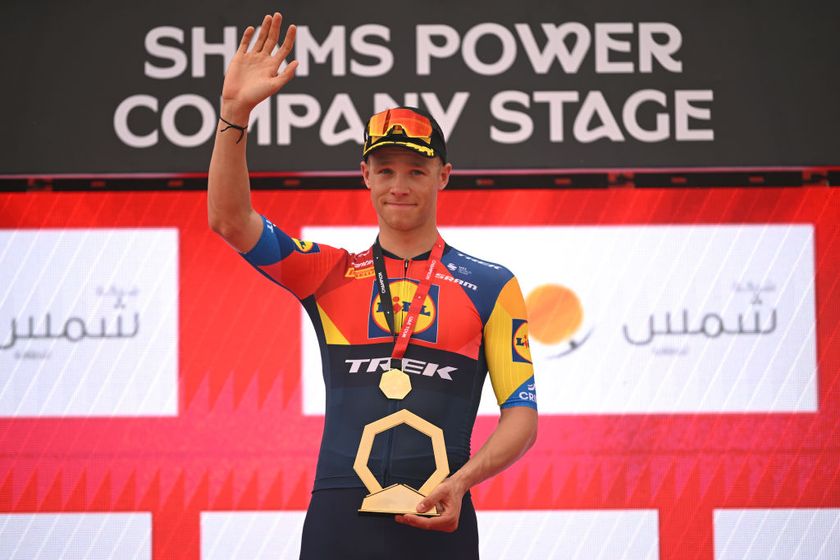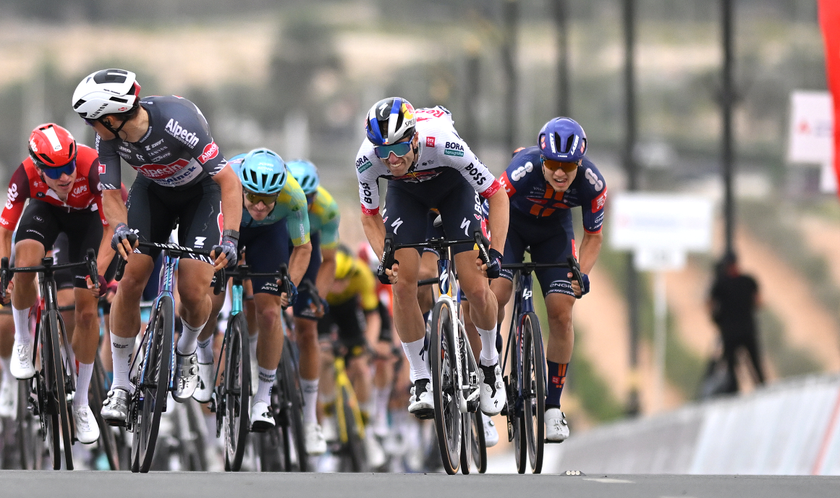Alberto Contador: The five races that changed my life
'This last Vuelta has felt like a gift - something very special'








Alberto Contador started his professional cycling career in 2003 and raced for some of the top teams in the world before retiring in 2017. Regarded as one of the sport's best climbers, Contador won multiple titles in all three Grand Tours: Giro d'Italia, Tour de France and Vuelta a España. In an exclusive interview with Cyclingnews, Contador takes a personal and in-depth look back at his career and the five races that shaped his life.
Subida a Gorla 2001
When I was amateur, there was definitely one race that stands out, which was the Subida a Gorla [the Gorla hillclimb] in 2001 in the Basque Country, my first year as an amateur. It's a short hill climb which you do as a road race, whoever got to the top first, won. And in fact, I still hold the record for that climb. People used to say that whoever won it, would then go on to be a professional and a good rider. I've had three dogs, one called Tour, and another Etna. But the first I called Gorla because that climb and race was so important to me.
Tour de Pologne 2003
The Tour de Pologne in 2003, when I won my first race as a pro, with ONCE-Eroski. It coincided with ONCE being in the Vuelta a España fighting for the overall with Isidro Nozal against Roberto Heras. And then there we were in Poland, racing on some really dangerous circuits. It was tipping down with rain almost every day, and by the time we got to the final time trial [19 kilometres on stage 7 from Jelenia Gora to Karpacz - ed.], there were only two of us left in the ONCE team, me and Koldo Gil. The last day was a split stage; a short uphill stage in the morning and then a time trial with a flat section and then an uphill part, maybe five kilometres or so, to finish it off. I'd always done well in time trials, and there I was as a neo-pro. I went over to the director the night before and said, "Hey, what about if I only go through the motions in the morning stage and then save as much strength as possible, and really go for it in the afternoon?"
And the director, Santi García, looked at me and said "OK if that's what you want" and so I sat back when the racing got tough in the morning and let myself get dropped. In the afternoon, I was in the warm-up and getting really nervous. I was telling myself time and again, "I've got to win, I've got to win." After which I got the best time, and none of the GC riders could beat me. I think that was the only time in my career as a pro that I deliberately let myself take it easy on one stage, and get dropped so that I could do better in the next!
Tour Down Under 2005
The Tour Down Under was the first race I could do after my stroke [in the Vuelta a Asturias 2004, leading to eight months off the bike - ed.] and it represented my first step back to a normal life. Heading over to Australia came with a very long flight, from Madrid to Kuala Lumpur and then on to Adelaide, and I spent a lot of those two flights just thinking about what I had achieved, and how I'd managed to come back to racing again.
It hadn't been easy. To cure me, they opened up my entire skull, I'd had some epileptic fits, and there was some major bruising as well, and I had no idea if it would be possible to race again. Then there were some doctors who said it was too soon, others who disagreed, but finally, they gave me the all clear on November 27 [of 2004] to start riding a bike again, and that was the first day I could start training again, too. From day one I went all out as hard as I could, training every single day with whoever I could find who'd be happy to spend a few hours on a bike ride or training by myself.
But racing the Tour Down Under meant it was only five weeks after the all-clear. I got on a flight in early January and headed to Australia. But I told myself that this was the best thing to do because that way, racing, rather than training by myself, at least if something went wrong again, I'd have an ambulance following me in the peloton that could take me straight to hospital!
Get The Leadout Newsletter
The latest race content, interviews, features, reviews and expert buying guides, direct to your inbox!
But as soon as I got back on the bike, I felt fine, and as they didn't have the [pre-TDU] criterium then, I went straight back into racing in the Tour Down Under. Just putting on a race number was something really important, it saw me get back to normal life. But then on top of that, I could win the toughest stage of the Tour Down Under, crossing the line just ahead of Luis León Sánchez. For me, that day was something incredible, and definitely, that victory in the Tour Down Under that year was the most special of my career.
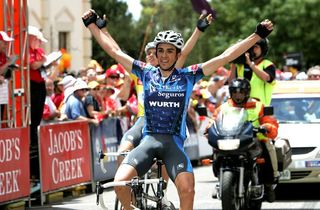
The Giro d'Italia 2008
The first of the three Giro d'Italia wins was the best. I had no idea that I could do well in it. I had no idea I was even going until the last minute when they called me up when I was on holiday. In fact, it was a race I didn't particularly find appealing because for some reason up until then I had never hit good form at that time of year. So I really hadn't ever imagined taking part in it, but the circumstances surrounding the team at the time (Astana had been barred from the 2008 Tour - ed.) made it all happen. And the initial idea was that I would only be there for a week, and at that point, they told me I should quit and start my build-up for the Dauphiné, which I was set to try to win with [Astana co-leader] Levi Leipheimer, as we had no Tour de France. But after a week I was doing all right, so instead, I said to the director, 'Well you'll have to hang on, now you've made me come here'. And in the summit finish I was up there with the best of them, and then in the mid-race time trial I finished second, and in fact, if it hadn't been raining, I think I could have won it. Which was the point when I said, 'Sorry Johan [Bruyneel], I'm sticking here all the way to Milan.' And I ended up winning.
I had been on holiday when they called me to tell me I had to do the Giro d'Italia and I remember my house was in the middle of being rebuilt and I hadn't trained for quite a while. So I went to Italy on two days of training in the Sierras of Madrid and then two days before it started I headed to the Giro. I went out training with my teammates, and my heart rate was going through the roof, and they were just pedalling round, not even breaking out a sweat. I thought to myself, 'Good grief, now what's going to happen?' On top of that, early on I fell in a crash with a load of Euskaltel riders and had a mini-fracture in a bone in my forearm, and for a week it really hurt. That crash was right before the time trial, and in the time trial I couldn't raise my arms on the TT bars, and that made it very tricky taking the corners. But the days went by, we tried to keep my arm immobile, and it took a long time for me to get into form but when it finally got good, I could finish the race feeling really strong. Even so, just recently, last December, I had an operation on my hand to sort out a broken ligament, and I suspect I broke that particular ligament in that crash back in Italy in 2008.
Not only that, I've still got a chunk of broken bone, maybe half a centimetre square, floating around in one wrist from a crash and I don't know when or how that happened. Probably a crash early on in a Grand Tour where you just tell yourself that it's normal your hands hurt when it crashes. You refuse to go to a hospital to have an X-ray because the last thing you want is the team to send you home, and you keep riding through the pain to the point where it's almost forgotten. All that matters is that you can keep going the next day.
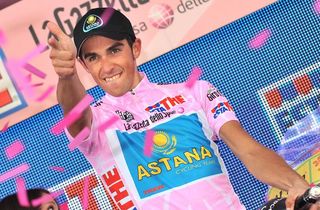
The Vuelta a España 2017
This last Vuelta a España has felt like a gift - something very special. Obviously, for me and my teammates, stage 3 was a real shame, when I had some really bad stomach problems and lost my GC options. But that also meant I and the team could do a really different race.
It might even shock some people, but to be perfectly honest, if I weighed up the pros and cons between doing a Vuelta where I'd calculated everything and I ended up winning it overall, and a Vuelta where I was able to attack exactly when I felt like it, I prefer the latter.
I think for me, going for that latter option in the Vuelta gave me more. It left me feeling better. And maybe for the fans, too, it meant more, doing that rather than racing in a way that was more calculating and which could have meant, maybe, I won the overall.
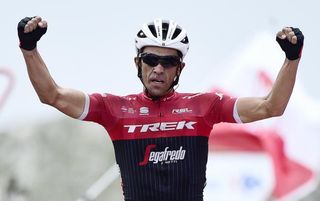
The Holy Week is available to download to rent ($1.99 USD) or to purchase ($4.99 USD) from Vimeo On Demand. You can also watch the trailer below, with options to buy or rent at the end.
THE HOLY WEEK from Cyclingnews Films on Vimeo.
Alasdair Fotheringham has been reporting on cycling since 1991. He has covered every Tour de France since 1992 bar one, as well as numerous other bike races of all shapes and sizes, ranging from the Olympic Games in 2008 to the now sadly defunct Subida a Urkiola hill climb in Spain. As well as working for Cyclingnews, he has also written for The Independent, The Guardian, ProCycling, The Express and Reuters.
Most Popular


